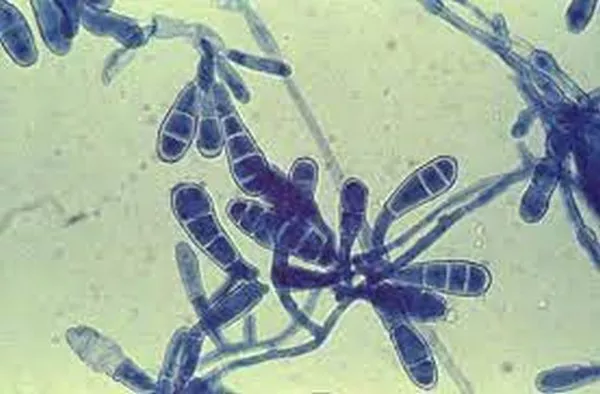Ringworm, despite its misleading name, is not caused by a worm but by a fungal infection. Medically termed tinea, this condition can affect various parts of the body, including the scalp, where it is known as tinea capitis. One of the most distressing symptoms associated with tinea capitis is hair loss. This article delves into the reasons behind this hair loss, examining the biological mechanisms, risk factors, and available treatments.
The Basics of Ringworm and Tinea Capitis
What is Ringworm?
Ringworm is a common fungal infection caused by dermatophytes, a group of fungi that thrive on keratin, the protein in skin, hair, and nails. The infection is characterized by red, itchy, circular rashes with clear centers, hence the name “ringworm.” These fungi are highly contagious and can spread through direct contact with infected individuals, animals, or contaminated objects.
Understanding Tinea Capitis
When ringworm affects the scalp, it is called tinea capitis. This condition predominantly affects children but can also occur in adults. Tinea capitis presents as scaly, itchy patches on the scalp that often lead to hair loss. These patches may appear inflamed, with pustules or black dots where hair has broken off at the scalp level.
How Ringworm Causes Hair Loss
The Fungal Invasion
The primary cause of hair loss in tinea capitis is the direct invasion of hair shafts by dermatophyte fungi. These fungi produce enzymes called keratinases, which break down keratin, allowing the fungus to penetrate and colonize the hair. As the fungi proliferate within the hair shaft and follicle, they disrupt the normal growth cycle of hair, leading to hair breakage and loss.
Inflammatory Response
The body’s immune response to the fungal infection also plays a crucial role in hair loss. When the immune system detects the presence of the fungi, it mounts an inflammatory response. This inflammation can damage hair follicles and surrounding tissues, contributing further to hair loss. In severe cases, this inflammatory response can lead to permanent scarring and irreversible alopecia.
SEE ALSO: Does Disinfectant Spray Kill Ringworm?
Types of Hair Loss in Tinea Capitis
Tinea capitis can cause different patterns of hair loss, depending on the specific dermatophyte involved and the host’s immune response. The most common types are:
1. Non-inflammatory tinea capitis: Characterized by dry, scaly patches of hair loss. The hair breaks off at or near the scalp, leaving behind short stubs, often referred to as “black dot” ringworm.
2. Inflammatory tinea capitis: Presents with inflamed, swollen patches, sometimes filled with pus (kerion). This type of infection can lead to significant hair loss and potential scarring.
3. Favus: A severe form of tinea capitis characterized by crusty lesions called scutula. This form is less common but can result in extensive scarring and permanent hair loss.
Risk Factors and Transmission
1. Transmission Pathways
Ringworm is highly contagious and can be transmitted through several pathways:
Direct Contact: Touching an infected person or animal.
Indirect Contact: Contact with contaminated objects such as combs, hats, or bedding.
Environmental Exposure: Fungi can survive on surfaces in warm, moist environments like locker rooms and swimming pools.
2. Risk Factors
Certain factors increase the risk of developing tinea capitis:
- Age: Children are more susceptible due to close contact in schools and playgrounds.
- Hygiene: Poor hygiene practices can facilitate the spread of the fungi.
- Immune System: Individuals with weakened immune systems are at higher risk.
- Overcrowding: Living in crowded conditions increases the likelihood of transmission.
3. Diagnosing Tinea Capitis
Accurate diagnosis is essential for effective treatment. Physicians typically use the following methods to diagnose tinea capitis:
- Clinical Examination: Visual inspection of the scalp and hair for characteristic signs.
- Wood’s Lamp Examination: Certain dermatophytes fluoresce under ultraviolet light.
- Microscopic Examination: Samples of hair or scalp scraping are examined under a microscope to detect fungal elements.
- Culture: Growing the fungi in a laboratory to identify the specific species.
SEE ALSO: What Are the Side Effects of Ringworm in Humans
Treatment and Management
1. Antifungal Medications
The primary treatment for tinea capitis is oral antifungal medication, as topical treatments alone are usually insufficient. Commonly prescribed antifungals include:
Griseofulvin: Traditionally the treatment of choice, effective but requires long-term use.
Terbinafine: Often preferred due to shorter treatment duration and efficacy.
Itraconazole and Fluconazole: Alternative options, especially for resistant cases.
2. Adjunctive Treatments
In addition to oral antifungals, other treatments may be used to manage symptoms and prevent spread:
- Topical Antifungals: Used to reduce surface fungi and prevent transmission.
- Anti-inflammatory Medications: Steroid creams or oral steroids may be prescribed to reduce inflammation.
- Shampoos: Medicated shampoos containing selenium sulfide or ketoconazole can help reduce fungal spores on the scalp.
Preventing Hair Loss and Scarring
1. Early Intervention
Prompt treatment is crucial to prevent extensive hair loss and potential scarring. Early intervention with antifungal medications can limit the spread of the infection and minimize damage to hair follicles.
2. Hygiene and Environmental Control
Maintaining good hygiene and controlling environmental factors are key to preventing tinea capitis:
- Personal Hygiene: Regular washing of hair and scalp with medicated shampoos during outbreaks.
- Environmental Cleaning: Disinfecting combs, brushes, hats, and bedding to prevent re-infection.
- Avoiding Contact: Minimizing direct and indirect contact with infected individuals or animals.
3. Monitoring and Follow-Up
Regular follow-up with a healthcare provider is essential to ensure the infection is fully resolved and to monitor for any signs of recurrence or complications.
Long-Term Prognosis and Hair Regrowth
1. Reversibility of Hair Loss
In most cases of tinea capitis, hair loss is temporary, and hair regrowth occurs once the infection is treated. However, the extent of regrowth depends on several factors:
- Severity of Infection: Mild cases with minimal inflammation typically see full hair regrowth.
- Duration of Infection: Prolonged infections or delayed treatment can lead to more extensive hair loss.
- Inflammatory Response: Severe inflammatory reactions can cause permanent follicular damage and scarring alopecia.
2. Scarring Alopecia
In cases where tinea capitis causes significant inflammation, scarring can occur, leading to permanent hair loss. This scarring alopecia is more likely in cases with severe inflammatory tinea capitis or favus. Early and aggressive treatment is essential to minimize this risk.
Conclusion
Hair loss caused by tinea capitis is a multifaceted issue involving the direct invasion of hair shafts by dermatophytes and the body’s inflammatory response. Understanding the underlying mechanisms is crucial for effective diagnosis and treatment. While hair loss in tinea capitis is often temporary, prompt and appropriate treatment is necessary to prevent permanent damage and scarring. Maintaining good hygiene practices and environmental controls can help reduce the risk of infection and recurrence, ensuring healthy hair regrowth and overall scalp health.
Related Topics:


























